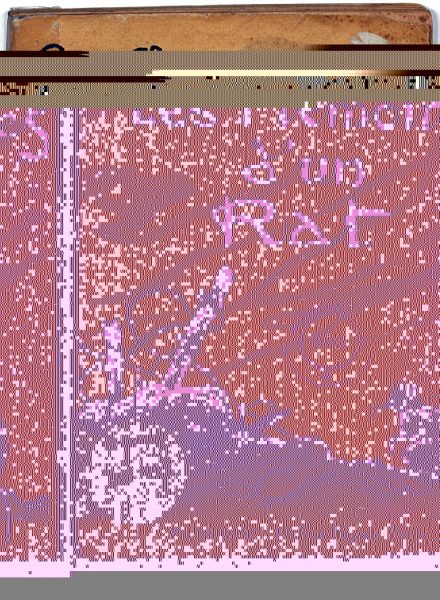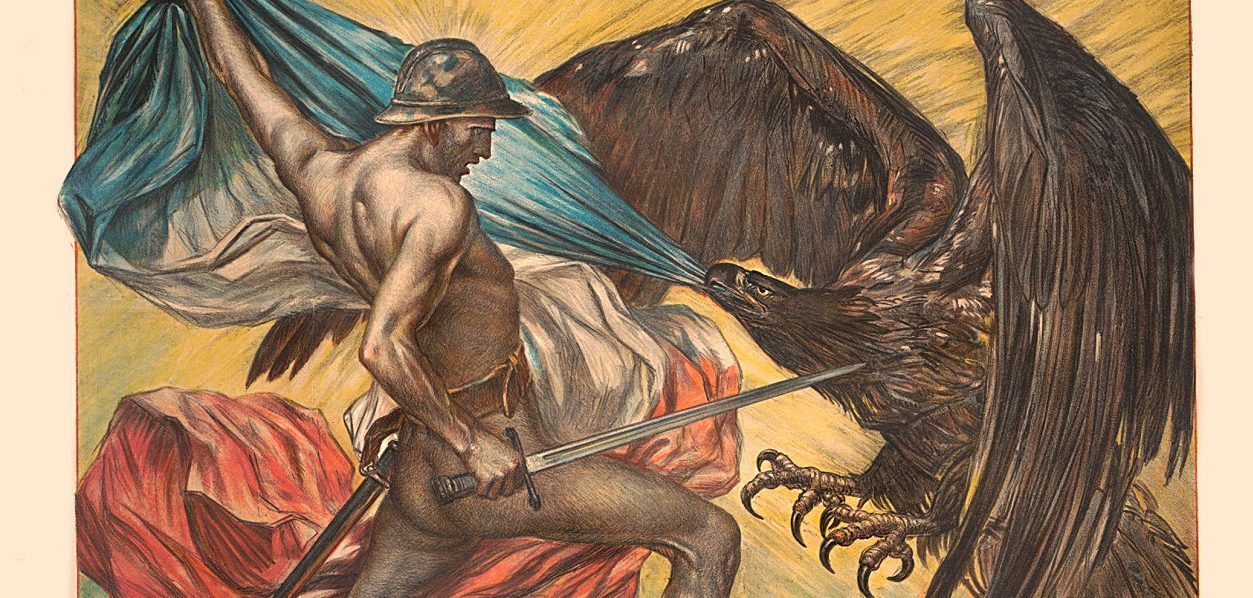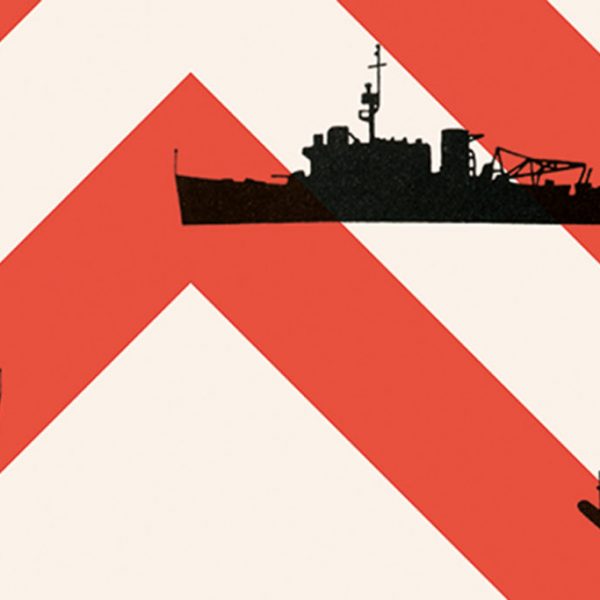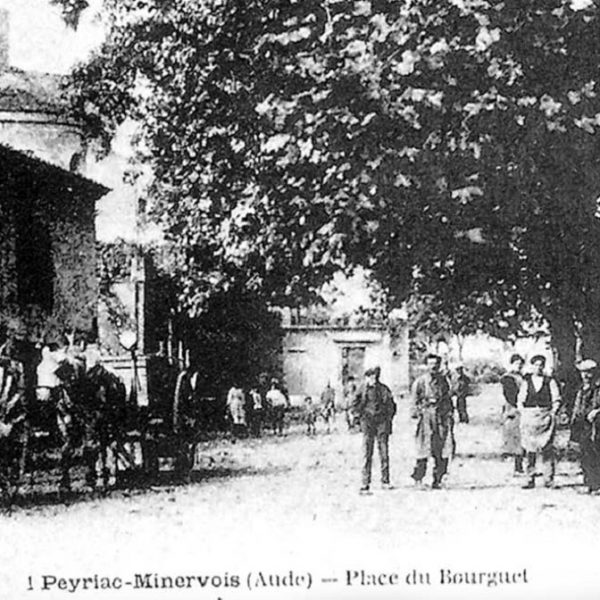The Invention of the Modern Soldier
Libby Murphy—
During the Great War, French soldiers struggled to make sense of their experience, both for themselves and for their compatriots. Soldier-writers used fiction to recalibrate civilians’ expectations about the war and to teach them to see through the “skull-stuffing” of the mainstream media—exaggeration, euphemisms, and outright lies. Many of the most successful novels of the war years—Gaspard (1915), Le Feu (1916), Les Croix de bois (1919)—were written by soldiers fed up with bombastic accounts of soldier heroism peddled on the home front.
Civilians were being encouraged to imagine the French infantryman or poilu (literally “hairy one”) as a larger-than-life superman, not as a flawed and vulnerable human being. A sort of cardboard cutout of the trench fighter—fearless, self-sacrificing, morally pure—was being held up as an impossible heroic ideal even as real soldiers were being torn limb from limb in the mud and shit and scrap metal of the Western Front. To set the record straight, soldier-writers sent stories home from the front, forging a new vision of what soldier heroism looks like in the age of industrial warfare.
In these novels, foot soldiers are depicted as smelly, boisterous, unkempt, lice-infested, and hopelessly un-seductive in their ill-fitting, mud-caked uniforms. In scenes depicting soldiers on leave attempting to enter places of civilian respectability, civilians are shown expressing disgust for the “heroes” they claim to adore. To gain favor, the poilu on leave can only parrot the jargon civilians expect from him and assume the heroic postures they want to see. The soldiers in one novel pose for a group of officers and civilians who come to inspect the mineshaft they are digging. In exchange for cigarettes, the men entertain the visitors with wildly embellished stories of their last attack. They even allow themselves to be photographed in “memorable poses of heroes ready for action.” But soldiers are also depicted taking their revenge on civilians by conning them, stealing from them, or mocking them behind their backs. In Léon Werth’s Clavel soldat, a soldier even fantasizes about dropping bombs on them.

Pierre Chaine, Les Mémoires d’un rat (Paris: A l’Oeuvre, 1917). BDIC (Bibliothèque de documentation internationale contemporaine)
The grunt’s eye view of the modern “hero” as “hairy one” is pushed to satirical extremes in The Memoirs of a Rat, a 1917 eyewitness account of the Western front written from the perspective of the least lofty warrior imaginable: a trench rat. After Ferdinand the rat has been evacuated from the front, he adopts the canned clichés of heroism expected by civilians. “I, too, was at Verdun!” he brags. “[I], too, made of my chest a living rampart at the famous citadel.” This is, of course, a ridiculous proposition, given the size of the rat’s tiny chest. Ferdinand engages in bombast of the kind in the mass press, literally puffing himself up to fit the metaphor he has chosen. He seems not to register the irony in his near apology that “all [he] needed to become a hero was to get [himself] killed.” The reality behind the blustering slips out when he admits that he was “less proud when they were leading [him] up [to Verdun],” than “after the fact,” when he had come out of the ordeal alive.
Soldier-writers worked hard to change civilians’ perceptions about modern “heroism,” associating it with everyday attributes like cleverness, resilience, and resourcefulness, rather than with traditional abstractions like honor, glory, or self-sacrifice. Soldier courage was expressed in new behaviors and practices—those of making do, muddling through, holding on, and getting by. Soldier motivations, these novelists set out to show, were complex and contradictory. The typical poilu was neither a self-sacrificing saint nor a helpless victim. One soldier-character from Le Feu by Henri Barbusse sums up this ambivalence. When his “buddies are in danger,” he “forgets everything” and risks his life to help them. “But, otherwise, man, I’m looking out for number one.”
Soldiers in these novels are grousing, cursing, duty-dodging tricksters who try their best to keep out of harm’s way and avoid giving their lives for the country they love. Leveled against a civilian, the label of embusqué or shirker would be a devastating insult. Bandied about among soldiers, it was a begrudgingly offered compliment. However much soldiers might insult or vilify the shirker behind the lines, these novels suggested, they wouldn’t hesitate to take his place.
This new understanding of soldier heroism born during the First World War came to dominate representations of soldiers throughout the 20th century. The Good Soldier Švejk, All Quiet on the Western Front, Catch-22, M*A*S*H—all of these now iconic war stories owe something to the work of contestation and imagination that these Great War soldier-writers performed. These texts all seek to demonstrate—by whatever means necessary, including comic means—that the hero of modern warfare is just an average guy like you or me who is doing his best to stay alive. In wartime, heroism is sometimes a matter of dumb luck. Heroic feats can be performed by unheroic people thinking unheroic thoughts and focused on nothing but saving their own hides. Such a clear-eyed assessment of the psychology of modern combat doesn’t diminish the dignity of soldier. On the contrary, it shows that wars can be won by ordinary people whose greatest glory is not to die for their country—but to survive for it.
Libby Murphy is associate professor of French at Oberlin College. Her research centers on French literature and culture of the First World War, the history of French journalism and popular culture, and theories of the novel. She is the author of The Art of Survival: France and the Great War Picaresque.



























